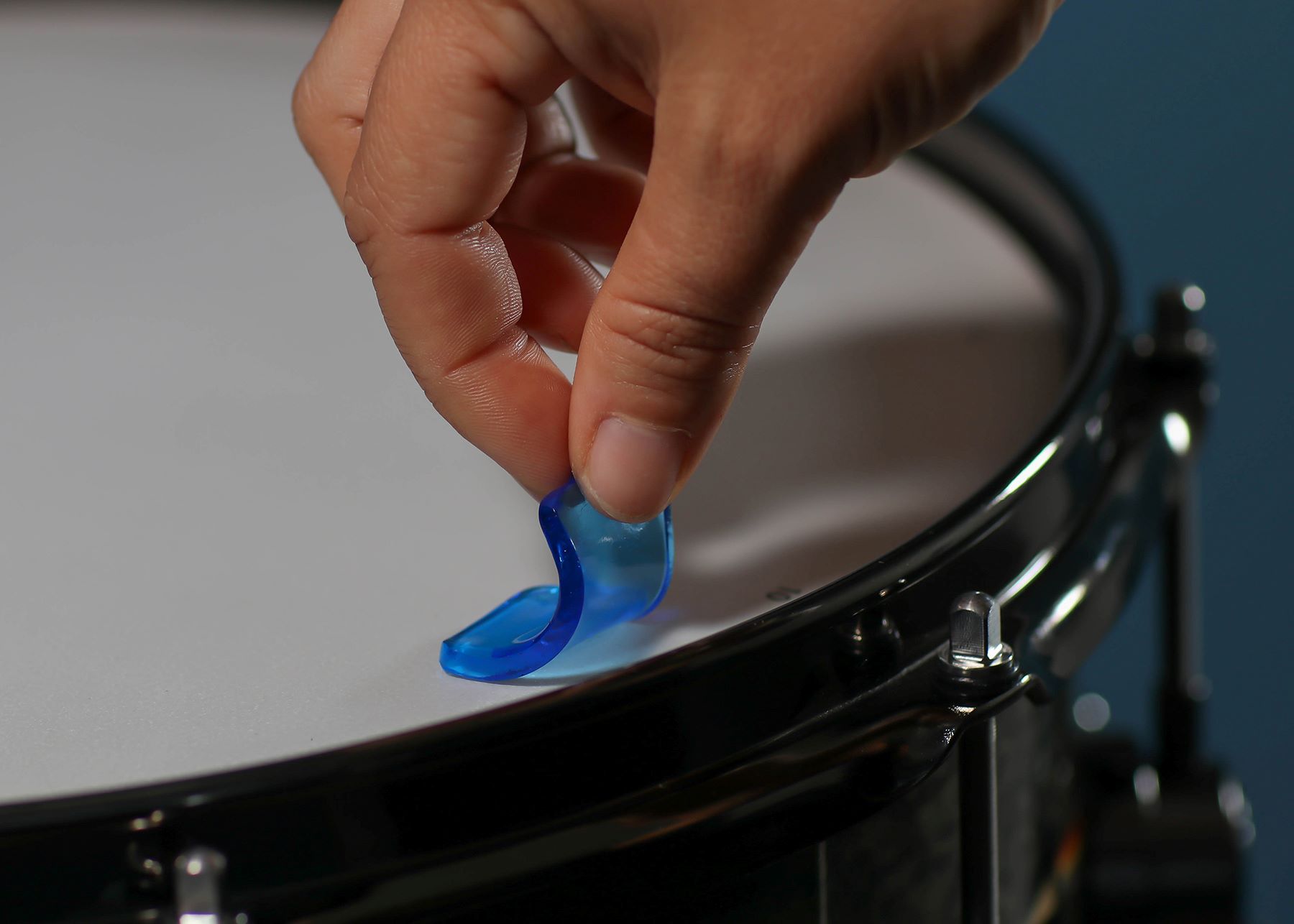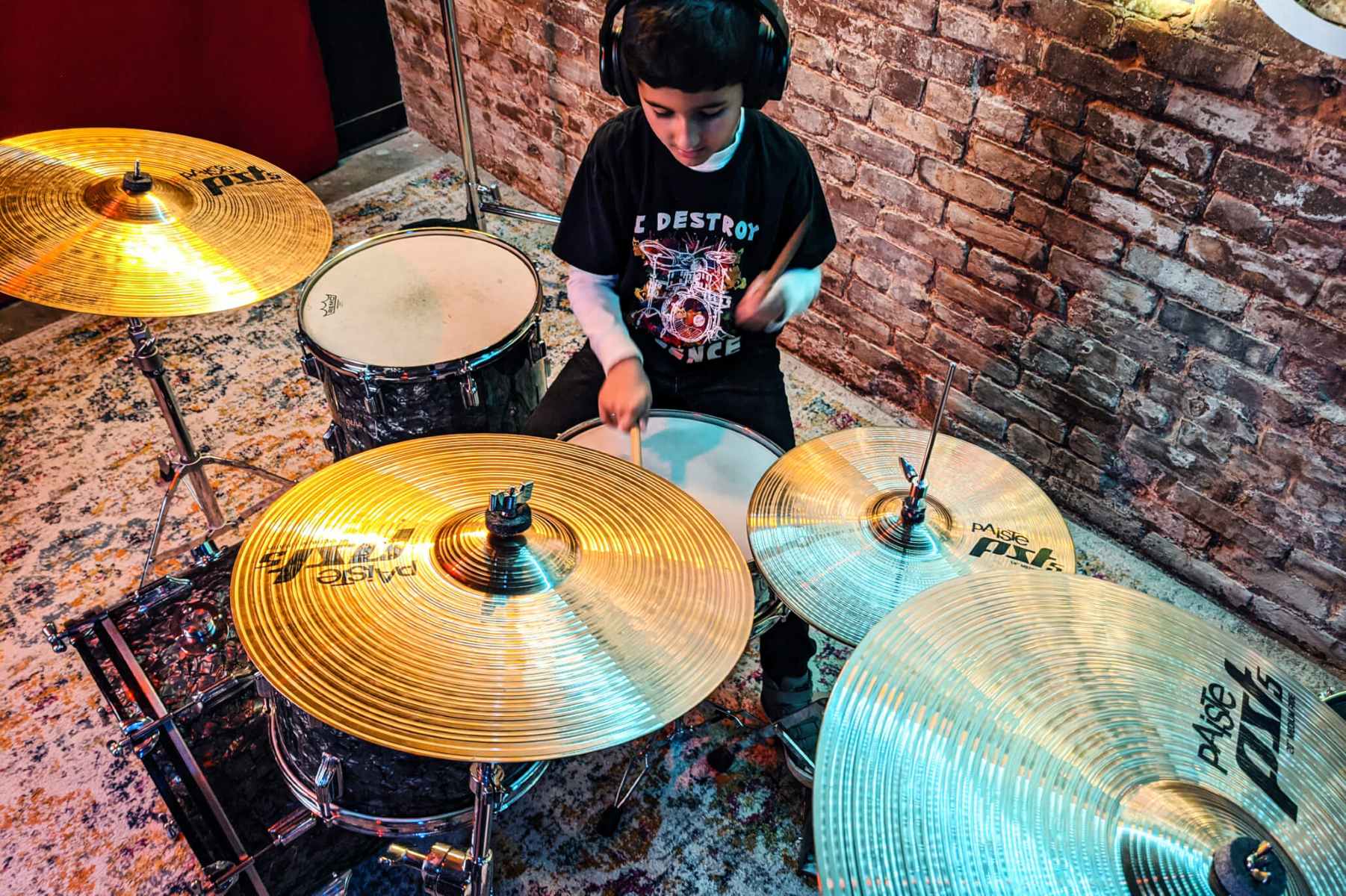Home>Instruments>Drums>What To Practice On Drums


Drums
What To Practice On Drums
Published: February 9, 2024
Looking to improve your drumming skills? Learn what to practice on drums and take your drumming to the next level. Explore exercises, techniques, and more.
(Many of the links in this article redirect to a specific reviewed product. Your purchase of these products through affiliate links helps to generate commission for AudioLover.com, at no extra cost. Learn more)
Table of Contents
Introduction
Playing the drums is a thrilling and dynamic pursuit that offers a unique blend of rhythm, coordination, and creativity. Whether you’re a beginner or an experienced drummer, honing your skills through regular practice is essential for growth and proficiency. This article will delve into various aspects of drum practice, offering insights into fundamental rudiments, stick control, independence, groove and timing, dynamics, different styles, soloing, drum fills, and improvisation.
Drumming is not just about keeping time; it’s about expressing emotions, telling stories, and creating a powerful sonic backdrop for music. As a drummer, your role is to drive the band, infuse energy into the performance, and captivate the audience with your rhythmic prowess. This requires dedication, discipline, and a passion for the instrument.
Throughout this article, we will explore the key areas that drummers should focus on during practice sessions. From mastering basic rudiments to developing the ability to play with finesse and creativity, each aspect plays a crucial role in shaping a well-rounded and proficient drummer. So, grab your sticks, find a comfortable practice space, and let’s dive into the exciting world of drum practice.
Basic Rudiments
Mastering basic rudiments is fundamental for any drummer looking to build a strong foundation. These fundamental sticking patterns form the building blocks for more complex rhythms and grooves. From single strokes and double strokes to paradiddles and flams, each rudiment serves as a vital tool in a drummer’s arsenal.
Practicing basic rudiments not only enhances your technical proficiency but also improves your limb coordination and control. It’s essential to start with a focus on precision and evenness in your strokes, gradually increasing speed as you gain proficiency. This deliberate approach ensures that you develop a solid foundation, setting the stage for more advanced techniques.
Devote time to practicing rudiments with a metronome, gradually increasing the tempo as you become more comfortable. This helps in developing a strong sense of timing and precision, which are indispensable skills for any drummer. Additionally, incorporating rudiments into your daily warm-up routine can significantly enhance your dexterity and overall drumming ability.
Remember, the goal is not just to play the rudiments mechanically, but to infuse them with dynamics and musicality. Focus on achieving a balance between power and finesse, as this will allow you to express yourself more effectively when playing in a band or performing solos. Understanding and mastering basic rudiments lays the groundwork for advanced drumming techniques and paves the way for a more expressive and dynamic playing style.
Stick Control
Developing precise stick control is essential for every drummer aiming to deliver consistent and articulate performances. It involves mastering the ability to strike the drumheads with accuracy, fluidity, and control. This skill is crucial for producing clear and defined sounds while maintaining a steady rhythm.
One effective way to enhance stick control is through practicing various exercises that focus on wrist and finger control. This includes working on rebound strokes, finger control strokes, and wrist turn exercises. By honing these techniques, you can achieve a more nuanced and controlled sound, allowing you to express a wide range of dynamics and articulations.
When practicing stick control, pay attention to the height and angle of your strokes. Consistency in stroke height is vital for achieving uniformity in sound, while adjusting the angle of the sticks can help you produce different tones and textures. Experimenting with different stroke heights and angles will expand your sonic palette and enable you to convey a greater range of emotions through your drumming.
It’s important to practice stick control exercises with a relaxed grip and posture to minimize tension and fatigue. This not only improves endurance but also promotes a more fluid and natural playing style. Additionally, incorporating rudiments into your stick control exercises can further enhance your technical proficiency and coordination.
Ultimately, developing exceptional stick control empowers you to execute complex patterns and fills with precision and finesse. It forms the cornerstone of expressive drumming, enabling you to convey your musical ideas with clarity and conviction. By dedicating focused practice time to refining your stick control, you lay the groundwork for a more polished and captivating drumming performance.
Independence
Drummers often strive to achieve independence, a skill that allows them to move different limbs separately while maintaining a consistent rhythm. This ability is integral to creating intricate and compelling drum patterns, especially in genres such as jazz, funk, and progressive rock. Developing independence involves training each limb to operate autonomously, enabling you to play complex rhythms and fills with fluidity and precision.
An effective approach to enhancing independence is to practice limb isolation exercises. These exercises involve focusing on individual limbs while maintaining a steady beat with the others. For example, you can practice playing a simple rock beat with your right hand and bass drum while executing different patterns with your left hand on the snare drum. Gradually increasing the complexity of these exercises challenges your coordination and strengthens the independence of each limb.
Another valuable technique for improving independence is to incorporate ostinatos into your practice routine. Ostinatos are repetitive rhythmic patterns played with one or more limbs, providing a constant framework over which you can layer different rhythms with the remaining limbs. This approach encourages creative exploration and helps develop the ability to maintain multiple rhythmic layers simultaneously.
Furthermore, practicing polyrhythms and cross-rhythms can significantly enhance independence. These exercises involve playing contrasting rhythmic patterns simultaneously, requiring precise coordination and mental agility. As you become proficient in executing polyrhythms, you expand your rhythmic vocabulary and gain the ability to infuse complex rhythmic textures into your drumming.
Developing independence is a gradual process that demands consistent and focused practice. By incorporating limb isolation exercises, ostinatos, polyrhythms, and cross-rhythms into your daily routine, you cultivate the ability to express intricate rhythmic ideas with clarity and finesse. Ultimately, mastering independence empowers you to create captivating and dynamic drum performances that showcase your technical prowess and musicality.
Groove and Timing
Developing a solid sense of groove and impeccable timing is paramount for any drummer aiming to drive the rhythm of a song and lock in with the rest of the band. Groove encompasses the feel, pocket, and overall rhythmic quality of your playing, while timing refers to your ability to maintain a steady and consistent tempo throughout a performance.
One effective way to enhance groove and timing is to practice with a metronome. This invaluable tool helps you internalize a steady pulse and develop a keen sense of rhythmic precision. Start by practicing basic grooves and fills at a comfortable tempo, gradually increasing the speed as your proficiency improves. This approach cultivates a strong internal clock and hones your ability to stay in the pocket, ensuring that your drumming feels anchored and propels the music forward.
Listening to a diverse range of music styles and studying the drumming grooves within each genre can also significantly impact your sense of groove. Analyzing the rhythmic nuances of funk, jazz, rock, Latin, and other musical styles exposes you to different rhythmic flavors and approaches, broadening your rhythmic vocabulary and enhancing your ability to groove authentically in various musical contexts.
Furthermore, playing along with backing tracks and collaborating with other musicians provides valuable opportunities to refine your groove and timing. These experiences allow you to adapt to different musical dynamics, respond to live interactions, and solidify your role as the rhythmic anchor of the ensemble.
Embracing dynamics and subtle variations in your playing further elevates your groove, infusing the music with depth and emotion. Incorporating ghost notes, accents, and subtle variations in your drum patterns adds texture and dimension to your groove, creating a compelling rhythmic tapestry that captivates listeners and elevates the overall musical experience.
By dedicating focused practice time to groove and timing, you cultivate the ability to deliver drum performances that are not only technically precise but also irresistibly infectious and deeply engaging. A drummer with a strong sense of groove and impeccable timing possesses the power to elevate the entire musical landscape, creating a rhythmic foundation that resonates with audiences and fellow musicians alike.
Dynamics
Mastering dynamics is a crucial aspect of drumming that elevates your playing from mere rhythm-keeping to a nuanced and expressive art form. Dynamics refer to the variations in volume, intensity, and articulation that you bring to your drumming, allowing you to convey emotions, create musical tension, and add depth to your performances.
One fundamental technique for developing dynamic control is practicing accent patterns. Accents involve striking certain notes with greater force to create emphasis and contrast within a rhythm. By incorporating accents into your practice routine, you refine your ability to modulate the intensity of your drumming, adding punch and expression to your playing.
Exploring the concept of ghost notes is equally essential for mastering dynamics. Ghost notes are subtle, quieter notes that add texture and groove to your playing. Integrating ghost notes into your grooves and fills infuses your drumming with subtlety and finesse, creating a more layered and compelling rhythmic foundation.
Utilizing the entire dynamic range of your drum kit is also pivotal for expressive drumming. Experimenting with soft, delicate strokes and thunderous, powerful hits enables you to convey a wide spectrum of emotions through your playing. By embracing the full range of dynamics, from delicate whispers to thunderous roars, you create captivating musical narratives that resonate with listeners.
Furthermore, understanding the concept of crescendos and decrescendos, or gradually increasing and decreasing the volume and intensity of your playing, adds a cinematic quality to your drumming. These dynamic swells and fades inject drama and tension into your performances, enhancing the overall musical impact and creating moments of heightened emotional intensity.
Ultimately, mastering dynamics empowers you to craft drum performances that are not only technically proficient but also emotionally evocative and sonically captivating. By honing your control over volume, intensity, and articulation, you breathe life and depth into your drumming, establishing yourself as a dynamic and expressive rhythmic storyteller.
Different Styles
Exploring and mastering different musical styles is a transformative journey for drummers, offering a rich tapestry of rhythms, techniques, and cultural influences to draw inspiration from. Whether it’s the syncopated grooves of funk, the intricate polyrhythms of world music, or the driving backbeat of rock, each style presents unique challenges and opportunities for artistic expression.
Immersing yourself in diverse musical styles broadens your rhythmic vocabulary and fosters adaptability, equipping you to thrive in a variety of musical settings. For example, delving into jazz drumming exposes you to complex time signatures, improvisational techniques, and a strong emphasis on swing feel, enhancing your musical versatility and improvisational prowess.
Studying Latin percussion introduces you to a rich array of rhythmic patterns, clave-based grooves, and percussive accents, expanding your understanding of polyrhythmic interplay and infusing your playing with infectious energy and groove. Similarly, exploring the nuances of electronic and hip-hop drumming cultivates an appreciation for sample-based beats, intricate hi-hat patterns, and the integration of electronic sounds, augmenting your rhythmic creativity and studio production skills.
Each musical style offers a distinct rhythmic language and cultural context, inviting you to embrace new playing techniques, explore unconventional time signatures, and adapt your drumming to suit the unique characteristics of each genre. This continual process of musical exploration and adaptation not only enhances your technical proficiency but also nurtures a deeper appreciation for the diversity and richness of global musical traditions.
Moreover, immersing yourself in different styles fosters a spirit of open-mindedness and creativity, inspiring you to blend influences and create innovative fusions that transcend traditional genre boundaries. By drawing from a diverse palette of musical styles, you can craft dynamic and eclectic drum performances that resonate with a broad spectrum of listeners and collaborators.
Ultimately, embracing different musical styles enriches your drumming journey, broadening your horizons and empowering you to become a versatile and adaptable musician. By immersing yourself in the rhythmic tapestries of various genres, you cultivate a deep well of inspiration and creativity, forging a path towards a more diverse, expressive, and impactful drumming repertoire.
Soloing
Soloing on the drums is a captivating and exhilarating form of musical expression that allows drummers to take center stage and showcase their technical prowess, creativity, and improvisational skills. A compelling drum solo is not only a display of rhythmic dexterity but also a narrative journey that captivates and engages audiences, offering moments of excitement, drama, and musical storytelling.
When embarking on a drum solo, it’s essential to approach it with a sense of musicality and structure. While technical proficiency is crucial, crafting a cohesive and compelling solo involves more than a mere display of speed and chops. It requires a thoughtful balance of rhythm, dynamics, and thematic development, akin to weaving a captivating story through percussive textures and rhythmic motifs.
One effective approach to soloing is to establish a thematic motif or rhythmic idea that serves as the foundation for your improvisation. This motif can be a simple rhythmic pattern, a melodic fragment, or a distinctive groove that provides a unifying thread throughout your solo. Developing and evolving this motif as the solo progresses creates a sense of continuity and coherence, guiding the listener through the musical narrative.
Exploring a diverse range of techniques and textures during a drum solo adds depth and variety to your performance. Incorporating elements such as polyrhythms, melodic tom-tom phrases, intricate foot ostinatos, and dynamic shifts in intensity allows you to create a multi-dimensional and engaging solo that captures the audience’s imagination.
Furthermore, embracing the concept of call and response within your soloing adds an interactive and conversational dimension to your performance. This involves alternating between rhythmic statements and responses, creating a dynamic interplay that invites the audience to participate in the musical dialogue and experience the spontaneity of live improvisation.
Ultimately, a captivating drum solo is a testament to your ability to engage and enthrall listeners through rhythmic innovation and expressive storytelling. By approaching soloing with a blend of technical proficiency, thematic development, and interactive dynamics, you craft a compelling musical journey that leaves a lasting impression and showcases the boundless creative potential of drumming.
Drum Fills
Drum fills are dynamic and expressive embellishments that punctuate musical phrases, transitions, and climactic moments within a song. As a drummer, mastering the art of crafting compelling and tasteful fills is essential for adding excitement, energy, and rhythmic punctuation to musical arrangements. Whether it’s a subtle, understated fill or a thunderous, bombastic flourish, drum fills serve as powerful tools for enhancing musical dynamics and creating impactful rhythmic accents.
When incorporating drum fills into a musical piece, it’s important to consider the context and musical dynamics. Fills should complement the overall musical structure and contribute to the ebb and flow of the song. Understanding the stylistic nuances and emotional content of the music enables you to tailor your fills to suit the mood and intensity of each musical passage.
One effective approach to crafting engaging drum fills is to blend rhythmic diversity with melodic and dynamic variation. Experimenting with different rhythmic patterns, orchestrations, and drum sound sources allows you to create fills that are both musically compelling and technically impressive. Additionally, incorporating dynamic shifts in volume and intensity within your fills adds a sense of drama and impact, elevating the overall musical impact.
Furthermore, developing a repertoire of fill variations and permutations enables you to adapt your fills to suit different musical contexts and transitions. From short, snappy fills that lead into a chorus to expansive, cascading fills that signal a climactic moment, having a diverse vocabulary of fill patterns at your disposal enhances your versatility and musical adaptability.
Embracing the concept of thematic motifs within your fills adds a sense of continuity and musical cohesion to your drumming. By revisiting and developing rhythmic ideas and motifs within your fills, you create a sense of rhythmic storytelling that resonates with listeners and enhances the overall musical narrative.
Ultimately, mastering the art of drum fills empowers you to infuse musical arrangements with rhythmic excitement, tension, and release. By approaching fills with a blend of creativity, musical sensitivity, and technical proficiency, you contribute to the rhythmic tapestry of a song, adding depth, energy, and rhythmic punctuation that captivates and engages audiences.
Improvisation
Improvisation is a cornerstone of musical expression, offering drummers the freedom to spontaneously create rhythmic narratives, explore new sonic territories, and engage in dynamic musical conversations. Whether in a live performance or a studio setting, the ability to improvise on the drums is a powerful skill that fosters spontaneity, creativity, and collaborative musical interaction.
One key aspect of improvisation is developing a strong sense of musical intuition and listening skills. By attuning your ears to the nuances of the music and the interactions within the ensemble, you can respond instinctively and contribute dynamically to the musical conversation. This heightened awareness allows you to anticipate musical developments, adapt to the dynamics of the performance, and craft rhythmic responses that resonate with the musical landscape.
Exploring diverse rhythmic motifs, patterns, and textures during improvisation broadens your creative palette and fosters musical innovation. Embracing polyrhythmic explorations, syncopated grooves, and textural variations enables you to introduce dynamic and unexpected elements into your improvisational expressions, adding depth and intrigue to your drumming.
Moreover, cultivating a sense of rhythmic dialogue and interplay with fellow musicians is integral to successful improvisation. Engaging in call-and-response exchanges, rhythmic counterpoint, and collaborative improvisational journeys fosters a sense of musical camaraderie and shared creativity. This interactive approach to improvisation creates moments of spontaneity and musical discovery, enriching the overall musical experience for both performers and audiences.
Embracing a mindset of fearlessness and experimentation is essential for unlocking the full potential of improvisation. Allowing yourself the freedom to take risks, explore unconventional rhythmic ideas, and push the boundaries of traditional drumming conventions fosters a spirit of innovation and artistic growth. This fearless approach encourages you to embrace the unknown, break free from musical constraints, and embark on rhythmic adventures that yield unexpected and inspiring musical discoveries.
Ultimately, improvisation on the drums is a dynamic and transformative journey that empowers you to engage in spontaneous musical storytelling, express your creativity, and collaborate in the co-creation of musical experiences. By honing your improvisational skills, you become a versatile and expressive rhythmic communicator, capable of weaving intricate and captivating rhythmic narratives that resonate with the essence of live musical expression.











